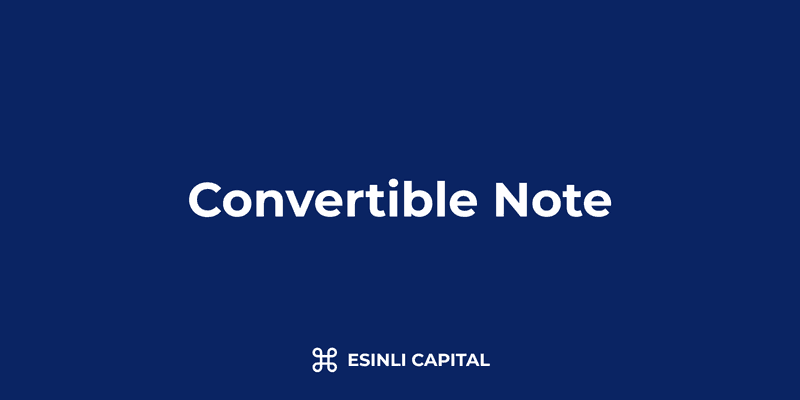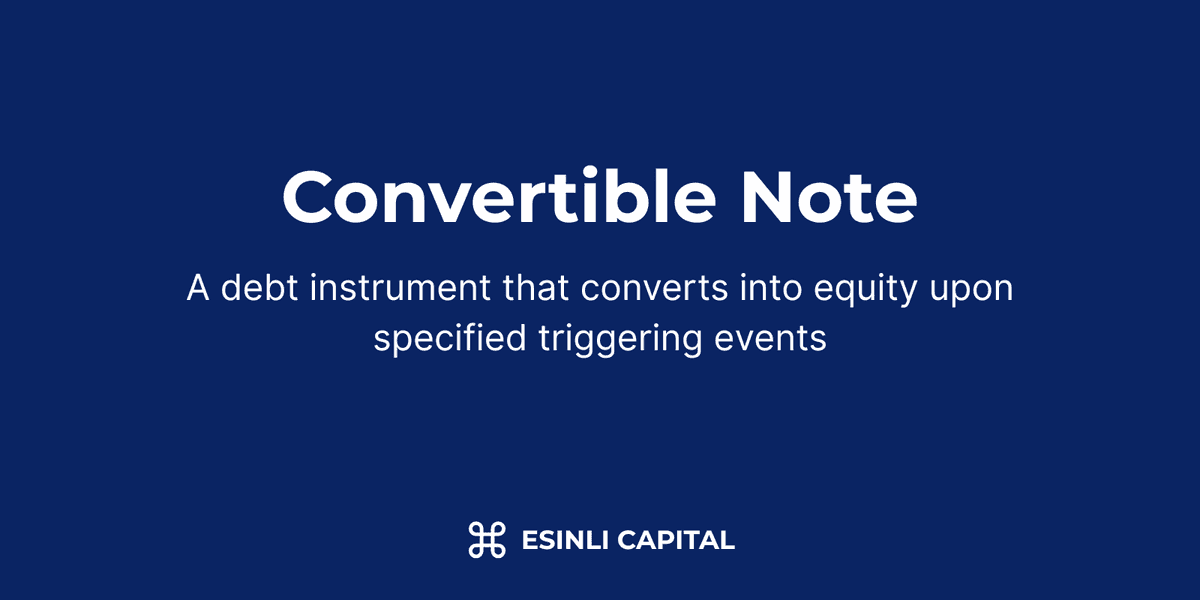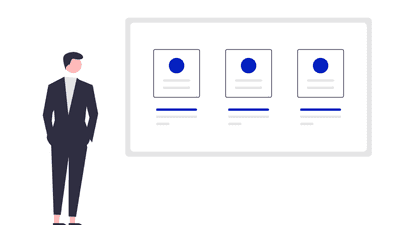In This Article
- What Is a Convertible Note?
- Essential Convertible Note Terms
- Convertible Note vs. SAFE
- How Convertible Notes Convert
- Convertible Note Calculator
- Startup Convertible Debt: Advantages and Disadvantages
- Convertible Note Interest Rate and Maturity
- Strategic Considerations
- Convertible Note vs. Equity
- Real-World Examples
- Frequently Asked Questions
- Convertible Notes: Alternative or Initial Step?
- What Is a Convertible Note?
- Essential Convertible Note Terms
- Convertible Note vs. SAFE
- How Convertible Notes Convert
- Convertible Note Calculator
- Startup Convertible Debt: Advantages and Disadvantages
- Convertible Note Interest Rate and Maturity
- Strategic Considerations
- Convertible Note vs. Equity
- Real-World Examples
- Frequently Asked Questions
- Convertible Notes: Alternative or Initial Step?

Convertible Note: Definition, Terms & Conversion Mechanics
KEY TAKEAWAYS
- A convertible note is a debt instrument that converts into equity upon triggering events like a qualified financing round, providing founders with quick capital without immediate valuation.
- Key terms include valuation cap (maximum company valuation for conversion), discount rate (reduction on share price), interest rate (typically 2-8%), and maturity date (when the note becomes due).
- Convertible notes differ from SAFE notes primarily because they are debt instruments with interest and maturity dates, while SAFEs are warrants with no such requirements.
- Conversion mechanics typically follow the formula: Investment ÷ (Share Price × Discount Rate or Cap Price) = Number of Shares.
- For startups, convertible notes offer speed and simplicity but come with the obligation of repayment if conversion doesn't occur.
What Is a Convertible Note?
A convertible note is a form of short-term debt financing used by early-stage startups that automatically converts into equity when certain triggering events occur, most commonly during a subsequent qualified financing round. This hybrid investment instrument begins as debt but is designed with the intention to convert into ownership shares rather than be repaid in cash.
Convertible notes have become a popular funding mechanism because they allow founders to delay placing a specific valuation on their company while still raising necessary capital. For investors, convertible notes typically offer favorable terms for later equity conversion, providing potential upside while offering some of the protections of debt.
How Convertible Notes Work
Convertible notes function as bridge financing between funding rounds or as an initial capital injection before a company's first priced equity round. The basic process works as follows:
- Issuance: The startup issues a convertible note to an investor in exchange for capital.
- Debt Period: Until conversion, the note remains as debt on the company's balance sheet, typically accruing interest.
- Conversion Trigger: When a specified event occurs (usually a qualified financing round of a predetermined size), the note automatically converts to equity.
- Conversion Calculation: The amount invested plus accrued interest converts into shares based on the terms of the note, which often include beneficial provisions like valuation caps and discount rates.
- Share Issuance: The investor receives preferred shares at the conversion price determined by the note's terms.
If the company does not raise a qualified financing round before the maturity date, the investor typically has the option to either:
- Demand repayment of the principal plus accrued interest
- Convert the note into equity at a pre-determined valuation
- Extend the maturity date
Essential Convertible Note Terms
Understanding the key terms associated with convertible notes is crucial for both founders and investors:
Valuation Cap
The valuation cap sets a maximum company valuation for the purpose of the note's conversion, regardless of the actual valuation in the triggering financing round. This protects early investors from dilution if the company's value increases significantly.
Example: If a convertible note has a $5 million valuation cap and the company later raises money at a $10 million valuation, the noteholder's investment converts as if the company were valued at $5 million, giving them twice as many shares as a new investor for the same investment amount.
Discount Rate
The discount rate provides noteholders with a reduction on the share price during the qualified financing round, typically ranging from 10% to 35%.
Example: With a 20% discount rate, if new investors pay $1.00 per share in the qualified financing, convertible noteholders would pay $0.80 per share.
Interest Rate
Unlike equity instruments, convertible notes accrue interest because they are technically debt. This interest (usually 2-8% annually) is added to the investment amount when calculating the conversion.
Example: A $100,000 note with a 5% annual interest rate would accrue $5,000 in interest after one year, resulting in $105,000 converting to equity.
Maturity Date
The maturity date specifies when the note becomes due if it hasn't converted to equity. Typical maturity periods range from 18 to 24 months.
Example: If a note with a 24-month maturity doesn't convert by the end of this period, the investor could demand repayment, agree to extend the term, or convert to equity at a predetermined valuation.
Qualified Financing
This term defines the minimum size of a financing round that triggers automatic conversion, often set between $1 million and $5 million.
Example: If a note specifies $2 million as qualified financing, it would only automatically convert when the company raises at least that amount in a priced equity round.
Pro-Rata Rights
These rights allow noteholders to participate in future funding rounds to maintain their ownership percentage.
Example: An investor holding 5% of the company after conversion could invest additional capital in the next round to maintain that 5% stake, regardless of new investors entering.
Convertible Note vs. SAFE
While convertible notes and SAFE (Simple Agreement for Future Equity) notes serve similar purposes, they differ in several key ways:
| Feature | Convertible Note | SAFE Note |
|---|---|---|
| Legal Structure | Debt instrument | Warrant/equity derivative |
| Interest | Accrues interest | No interest |
| Maturity Date | Has a defined maturity date | No maturity date |
| Potential for Default | Yes, if unpaid at maturity | No, continues indefinitely |
| Creation Date | Earlier innovation, more traditional | Created by Y Combinator in 2013 |
| Complexity | More complex legal documentation | Simpler documents |
| Standardization | Less standardized | Highly standardized |
| Regional Preference | Popular globally | Particularly common in Silicon Valley |
Y Combinator created SAFE notes to simplify early-stage investment by removing the debt components (interest and maturity), thus eliminating potential default scenarios. Both instruments retain valuation caps and discount rates.
The choice between convertible notes and SAFE notes often comes down to:
- Investor preference: Traditional investors might prefer convertible notes
- Geography: SAFEs are more common in tech hubs like Silicon Valley
- Timing needs: SAFEs can typically close faster due to simpler documentation
- Founder leverage: Higher-demand startups may prefer SAFEs' founder-friendly terms
- Tax requirements: Different jurisdictions may have different tax treatments
How Convertible Notes Convert
The conversion mechanics of convertible notes can seem complex but follow a basic formula. When a qualified financing occurs, the conversion price is determined by applying either the discount or the valuation cap, whichever provides the lower price per share (more favorable to the investor).
Conversion Formula
The general formula for calculating the number of shares received upon conversion:
Number of Shares = (Principal + Accrued Interest) ÷ Conversion Price
Where the Conversion Price is the lower of:
- Valuation Cap Conversion Price: Valuation Cap ÷ Company's Fully Diluted Shares
- Discount Conversion Price: New Round Price × (1 - Discount Rate)
Conversion Example
Let's illustrate with a practical example:
Investment Terms:
- Principal Investment: $200,000
- Interest Rate: 6% simple interest
- Time Period Before Conversion: 1 year
- Valuation Cap: $4 million
- Discount Rate: 20%
- Fully Diluted Shares Before New Round: 10 million
- New Round Valuation: $8 million
- New Round Price Per Share: $0.80
Calculation Steps:
-
Calculate Accrued Interest: $200,000 × 6% × 1 year = $12,000
-
Total Conversion Amount: $200,000 + $12,000 = $212,000
-
Calculate Valuation Cap Price Per Share: $4,000,000 ÷ 10,000,000 = $0.40 per share
-
Calculate Discount Price: $0.80 × (1 - 0.20) = $0.64 per share
-
Choose Lower Price (More Favorable to Investor): $0.40 (valuation cap price) < $0.64 (discount price)
-
Calculate Shares Received: $212,000 ÷ $0.40 = 530,000 shares
In this example, the investor receives 530,000 shares, which would be worth $424,000 at the new round price of $0.80, representing a significant premium on their $200,000 investment.
Convertible Note Calculator
For founders and investors looking to model different scenarios, convertible note calculators are essential tools. These calculators allow you to input various terms and see how they affect conversion outcomes.
While numerous online calculators exist, they typically account for:
- Investment amount
- Interest rate
- Term length
- Valuation cap
- Discount rate
- New round valuation
- Fully diluted shares
Using a calculator helps stakeholders:
- Negotiate terms with clear understanding of implications
- Model various exit scenarios
- Plan for dilution effects
- Compare convertible note terms with equity alternatives
Startup Convertible Debt: Advantages and Disadvantages
For Startups
Advantages:
- Speed and Simplicity: Faster to close than equity rounds due to less complex documentation.
- Valuation Delay: Postpones the difficult and potentially contentious valuation discussion.
- Lower Legal Costs: Typically requires less legal work than a priced equity round.
- Investor Incentives: Offers investors financial motivation through discounts and caps.
- Control Retention: Founders maintain control until conversion, as noteholders don't have voting rights.
Disadvantages:
- Debt Obligation: Remains a liability on the balance sheet until conversion.
- Repayment Risk: If a qualified financing doesn't occur before maturity, investors could demand repayment.
- Interest Expense: Accrued interest increases the effective cost of capital.
- Complexity Upon Conversion: Calculating conversion terms can be complicated, especially with multiple notes.
- Multiple Negotiation Points: Each note may have different terms, creating a complex cap table.
For Investors
Advantages:
- Downside Protection: As debt, offers better protection than equity if the company struggles.
- Conversion Upside: Discount rates and valuation caps provide beneficial terms for conversion.
- Higher Priority: In bankruptcy, debt holders have higher priority than equity holders.
- Known Entry Terms: Even without a fixed valuation, the parameters of future equity are defined.
- Interest Accrual: Earn interest while waiting for conversion.
Disadvantages:
- Limited Rights: No voting or governance rights until conversion occurs.
- Uncertain Outcome: The timing and terms of eventual equity ownership remain uncertain.
- Default Risk: Company may be unable to repay at maturity if conversion doesn't occur.
- Tax Complications: May have more complex tax implications than straightforward equity.
- Cap Table Uncertainty: Difficult to assess eventual ownership percentage until conversion.
Convertible Note Interest Rate and Maturity
Typical Interest Rates
Convertible note interest rates typically range from 2% to 8%, with the market average hovering around 5%. This interest generally accrues simply (not compounded) and is added to the principal amount before determining the number of shares upon conversion.
Factors influencing the interest rate include:
- Market conditions: Higher interest rate environments typically push rates upward.
- Company stage: Earlier, riskier companies may have higher rates.
- Investor relationship: Strategic investors might accept lower rates.
- Note duration: Longer-term notes may command higher rates.
- Regional norms: Silicon Valley rates often trend lower than other markets.
Maturity Considerations
The maturity date on a convertible note typically ranges from 18 to 36 months, with 24 months being most common. At maturity, several scenarios can unfold:
- Extension: The noteholder may agree to extend the maturity date, especially if the company shows progress toward a qualified financing.
- Forced Conversion: Some notes include provisions for automatic conversion at maturity at a predetermined valuation or at the valuation cap.
- Repayment: The noteholder could demand repayment of principal plus accrued interest.
- Default: If the company cannot repay and no alternative is negotiated, the company may default.
Founders should carefully consider maturity timeframes in relation to their fundraising roadmap to avoid awkward repayment demands when the company may not have sufficient cash.
Strategic Considerations
For Founders
-
Valuation Cap Negotiation: Each increase in the valuation cap directly impacts founder dilution. A higher cap means less dilution when conversion occurs.
-
Interest Rate Impact: While seemingly small, interest compounding over time can significantly affect the conversion amount. A 1% difference over two years on a $1 million note equates to $20,000 in additional dilution.
-
Maturity Planning: Set maturity dates that align with fundraising plans, giving enough runway to reach qualified financing.
-
Multiple Note Coordination: When issuing multiple notes, consider standardizing terms to avoid complex conversion calculations and inequitable treatment of investors.
-
Conversion Triggers: Carefully define what constitutes a qualified financing to ensure notes convert when desired.
For Investors
-
Valuation Cap Assessment: Compare the valuation cap to realistic future valuations to determine the potential upside.
-
Discount Rate Focus: Higher discount rates provide better economics regardless of future valuations.
-
Maturity Protection: Ensure the note includes favorable options at maturity to protect the investment if conversion hasn't occurred.
-
Pro-Rata Rights: Securing these rights preserves the ability to maintain ownership percentage in future rounds.
-
Most Favored Nation Clause: Consider including this provision to ensure getting the best terms if the company later issues notes with more favorable provisions.
Convertible Note vs. Equity
For startups weighing convertible notes against direct equity investment, consider these comparative factors:
| Factor | Convertible Notes | Direct Equity |
|---|---|---|
| Valuation Requirements | Delays formal valuation | Requires immediate valuation |
| Closing Speed | Faster (days to weeks) | Slower (weeks to months) |
| Documentation | Simpler, fewer documents | More complex documentation |
| Legal Costs | Lower ($5K-$15K) | Higher ($15K-$50K+) |
| Investor Rights | Limited until conversion | Immediate voting rights |
| Board Seats | Typically none | Often included |
| Balance Sheet Impact | Appears as debt | Appears as equity |
| Tax Treatment | Interest may be taxable | No equivalent tax issue |
| Future Dilution Clarity | Less transparent | More transparent |
| Control Dynamics | Founders retain control | Investors gain governance |
Real-World Examples
Case Study 1: Early-Stage Seed Investment
A pre-revenue SaaS startup raised $500,000 in convertible notes with the following terms:
- Valuation Cap: $5 million
- Discount Rate: 20%
- Interest Rate: 5%
- Maturity: 24 months
Eighteen months later, the company secured a Series A round at a $12 million valuation. The convertible noteholders' investment converted based on the valuation cap ($5 million), giving them an effective 58% discount on the shares compared to new investors.
Case Study 2: Bridge Financing
A marketplace startup approaching Series B needed additional capital to extend runway. They raised $2 million in convertible notes with:
- Valuation Cap: $50 million
- Discount Rate: 15%
- Interest Rate: 7%
- Maturity: 12 months
Six months later, they secured a $15 million Series B at a $65 million valuation. The notes converted using the discount rate rather than the cap, giving noteholders an effective price of $0.85 per dollar of Series B shares.
Frequently Asked Questions
Can a convertible note be paid back instead of converting?
Yes, convertible notes can be repaid rather than converted, though this typically happens only at maturity if a qualified financing hasn't occurred. Some notes include prepayment clauses allowing early repayment, but this usually requires investor consent.
What happens if a startup fails before convertible notes convert?
If a startup fails before conversion, noteholders, as creditors, have priority over equity holders in bankruptcy proceedings. However, in practice, failed startups rarely have significant assets remaining for distribution to any stakeholders.
How do convertible notes affect a company's cap table?
Convertible notes don't immediately appear on the cap table as equity, but companies should maintain a "fully-diluted" cap table that projects potential conversion scenarios to understand future ownership structures.
Are convertible notes considered a "round" of financing?
Convertible notes are typically considered bridge financing rather than a proper "round." They're often described as a "note round" or "seed round" if they represent the first outside capital, but they lack the formal structure of a priced equity round.
What is the minimum investment typically accepted for a convertible note?
Minimum investments vary widely based on company stage and investor type, but typically range from $25,000 to $100,000. Some angel-focused convertible note rounds accept investments as low as $10,000.
How are convertible notes treated for tax purposes?
For issuers (startups), interest on convertible notes is generally tax-deductible. For investors, interest income is typically taxable when accrued or paid, even if eventually converted. Tax treatment of discounts and conversion events can be complex, and both parties should consult tax professionals.
Convertible Notes: Alternative or Initial Step?
Convertible notes have evolved from an alternative to traditional equity rounds into a standardized first step in many startups' funding journeys. They effectively balance the needs of early-stage companies requiring capital without formal valuation against investors' desire for upside potential and some downside protection.
As the startup funding ecosystem continues to evolve, convertible notes have become a cornerstone financing tool, particularly at the pre-seed and seed stages. Their flexibility, relatively standard terms, and balance of founder and investor interests ensure they remain relevant despite newer alternatives like SAFE notes.
For founders, convertible notes offer a pathway to capital that preserves control and postpones valuation discussions until the company has more operating history. For investors, they provide a balanced risk-reward profile with greater protection than equity but significant upside potential through conversion features.
Understanding the mechanics, terms, and strategic implications of convertible notes is essential for anyone participating in the early-stage funding ecosystem—whether as a founder, investor, or advisor.



